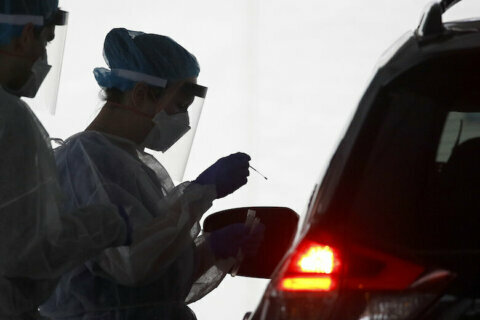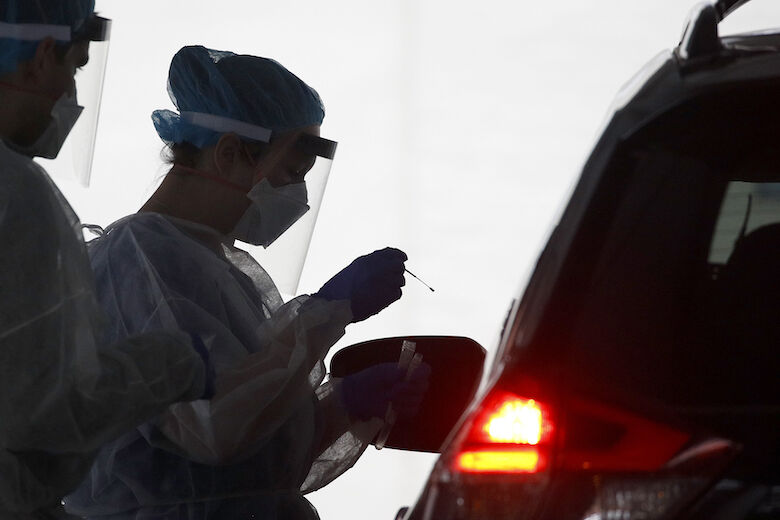
Working together across borders is crucial in controlling the coronavirus pandemic in the D.C. area, according to a group of local health experts.
Five local health experts from D.C., Maryland and Virginia discussed on a video panel Tuesday reopening the D.C. area and what that means for controlling the virus.
“We are very used to working with each other,” said Dr. Laurie Forlano, deputy commissioner for population health, Virginia Department of Health. “This is what we do, not to this scale, that’s different for us. But we’re very connected.”
Forlano said it’s crucial that Virginia, Maryland and D.C. continue to be open and talk with each other because the region is so interconnected with many people traveling on a fairly normal basis.
- Sign up for WTOP alerts
- Latest coronavirus test results in DC, Maryland and Virginia
- DC reports no new coronavirus deaths, 13 days of downward trend in community spread
- Retail shops, hair salons in Howard, Charles counties to reopen Friday
- Northern Virginia could enter Phase 1 of reopening this week
- Coronavirus resources: Get and give help in DC, Maryland and Virginia
Looking for more information? D.C., Maryland and Virginia are each releasing more data every day. Visit their official sites here: Virginia | Maryland | D.C.
Dr. Lisa Lockerd Maragakis, senior director of infection prevention for The Johns Hopkins Health System, said that as areas reopen, people in the D.C. area should be aware that things will not be as they used to before the closures.
“We need a new way of acting and behaving to mitigate the risk,” Maragakis said.
She said this includes wearing masks and continued social distancing. Also, it means a continued increase in testing so that officials know if there are new hot spots that could require areas to close again.
Fran Phillips, deputy secretary for public health services at the Maryland Department of Health, agreed, saying that testing and contact tracing is crucial for staying ahead of any additional outbreaks.
“It’s absolutely necessary that we are vigilant in monitoring what potentially could be a rebound, to understand that right away, and then to be able to be very aggressive in going after whether it’s an outbreak or a community transmission with more testing and contact tracing and other kinds of measures,” Phillips said.
Dr. Georges Benjamin, executive director of the American Public Health Association, said that in order for areas to get back to normal, the “chain of infection” needs to be stopped.
“Everyone who gets infected on average infects two other people, and if you think about that, it creates a chain of infection,” Benjamin said.
To break that chain, Benjamin said 50 to 70% of the population needs to be infected or there needs to be a combination of infection and a vaccine.









